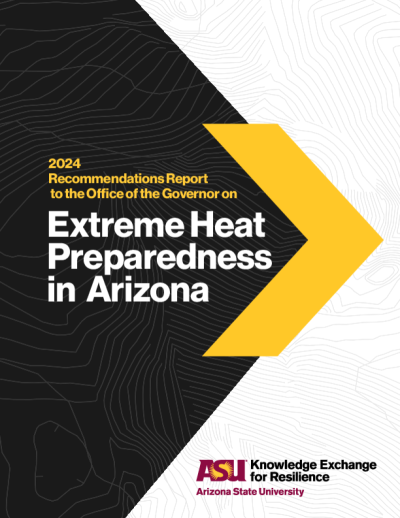


The overarching aim of this dissertation is to evaluate Geodesign as a planning approach for American Indian communities in the American Southwest. There has been a call amongst indigenous planners for a planning approach that prioritizes indigenous and community values and traditions while incorporating Western planning techniques. Case studies from communities in the Navajo Nation and the Tohono O’odham Nation are used to evaluate Geodesign because they possess sovereign powers of self-government within their reservation boundaries and have historical and technical barriers that have limited land use planning efforts. This research aimed to increase the knowledge base of indigenous planning, participatory Geographic information systems (GIS), resiliency, and Geodesign in three ways. First, the research examines how Geodesign can incorporate indigenous values within a community-based land use plan. Results showed overwhelmingly that indigenous participants felt that the resulting plan reflected their traditions and values, that the community voice was heard, and that Geodesign would be a recommended planning approach for other indigenous communities. Second, the research examined the degree in which Geodesign could incorporate local knowledge in planning and build resiliency against natural hazards such as flooding. Participants identified local hazards, actively engaged in developing strategies to mitigate flood risk, and utilized spatial assessments to plan for a more flood resilient region. Finally, the research examined the role of the planner in conducting Geodesign planning efforts and how Geodesign can empower marginalized communities to engage in the planning process using Arnstein’s ladder as an evaluation tool. Results demonstrated that outside professional planners, scientists, and geospatial analysts needed to assume the role of a facilitator, decision making resource, and a capacity builder over traditional roles of being the plan maker. This research also showed that Geodesign came much closer to meeting American Indian community expectations for public participation in decision making than previous planning efforts. This research demonstrated that Geodesign planning approaches could be utilized by American Indian communities to assume control of the planning process according to local values, traditions, and culture while meeting rigorous Western planning standards.






The urban heat island (UHI) phenomenon is a significant worldwide problem caused by rapid population growth and associated urbanization. The UHI effect exacerbates heat waves during the summer, increases energy and water consumption, and causes the high risk of heat-related morbidity and mortality. UHI mitigation efforts have increasingly relied on wisely designing the urban residential environment such as using high albedo rooftops, green rooftops, and planting trees and shrubs to provide canopy coverage and shading. Thus, strategically designed residential rooftops and their surrounding landscaping have the potential to translate into significant energy, long-term cost savings, and health benefits. Rooftop albedo, material, color, area, slope, height, aspect and nearby landscaping are factors that potentially contribute. To extract, derive, and analyze these rooftop parameters and outdoor landscaping information, high resolution optical satellite imagery, LIDAR (light detection and ranging) point clouds and thermal imagery are necessary. Using data from the City of Tempe AZ (a 2010 population of 160,000 people), we extracted residential rooftop footprints and rooftop configuration parameters from airborne LIDAR point clouds and QuickBird satellite imagery (2.4 m spatial resolution imagery). Those parameters were analyzed against surface temperature data from the MODIS/ASTER airborne simulator (MASTER). MASTER images provided fine resolution (7 m) surface temperature data for residential areas during daytime and night time. Utilizing these data, ordinary least squares (OLS) regression was used to evaluate the relationships between residential building rooftops and their surface temperature in urban environment. The results showed that daytime rooftop temperature was closely related to rooftop spectral attributes, aspect, slope, and surrounding trees. Night time temperature was only influenced by rooftop spectral attributes and slope.

This paper reviews how remotely sensed data have been used to understand the impact of urbanization on global environmental change. We describe how these studies can support the policy and science communities’ increasing need for detailed and up-to-date information on the multiple dimensions of cities, including their social, biological, physical, and infrastructural characteristics. Because the interactions between urban and surrounding areas are complex, a synoptic and spatial view offered from remote sensing is integral to measuring, modeling, and understanding these relationships. Here we focus on three themes in urban remote sensing science: mapping, indices, and modeling. For mapping we describe the data sources, methods, and limitations of mapping urban boundaries, land use and land cover, population, temperature, and air quality. Second, we described how spectral information is manipulated to create comparative biophysical, social, and spatial indices of the urban environment. Finally, we focus how the mapped information and indices are used as inputs or parameters in models that measure changes in climate, hydrology, land use, and economics.